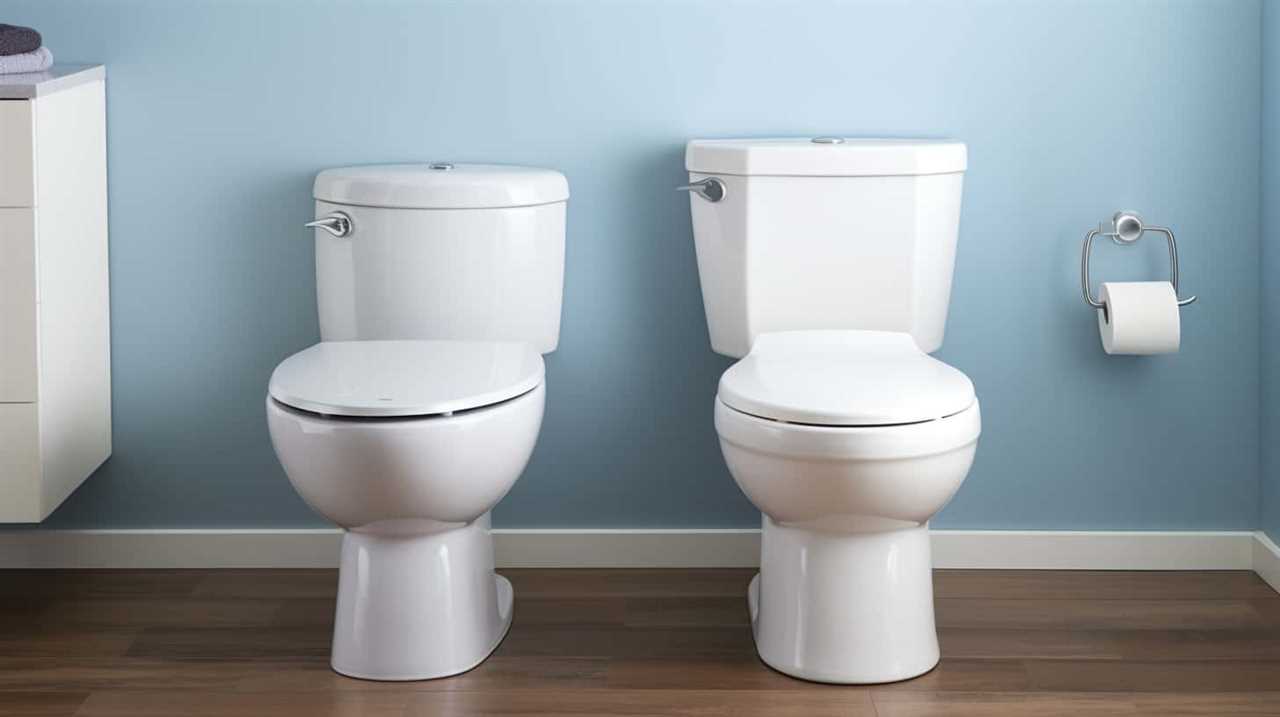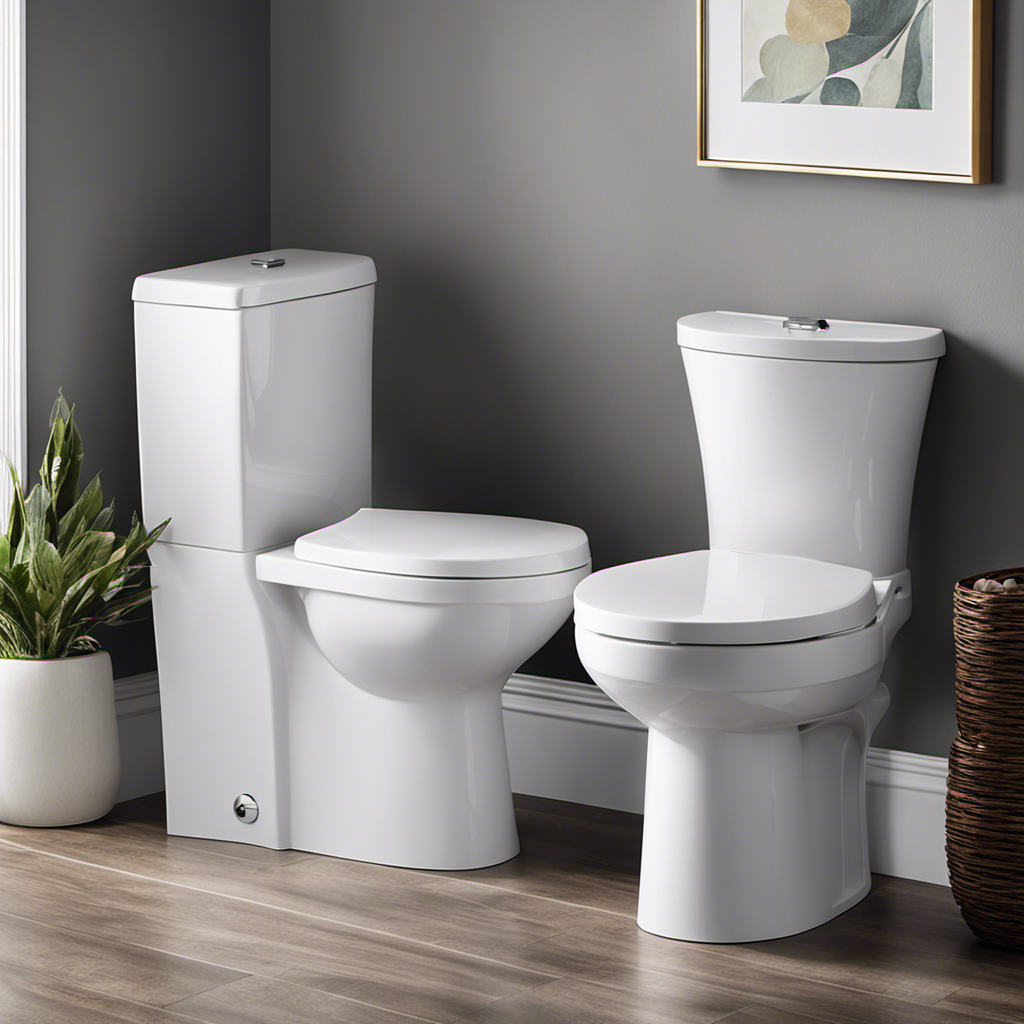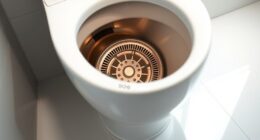Have you ever wondered if it’s possible to flush a toilet with low water pressure? Well, we’ve got the answers you’re looking for.
In this article, we will delve into the impact of low water pressure and explore the common causes behind it. Furthermore, we’ll discuss how low water pressure affects toilet flushing and provide you with tips and techniques to overcome this challenge.
So, sit tight and get ready to master the art of flushing with low water pressure.
Key Takeaways
- Low water pressure can lead to a decrease in the efficiency of water-based appliances and fixtures.
- Flushing becomes a tedious and time-consuming task when water pressure is low.
- Adjusting the fill valve can increase water flow and improve the force and speed of the flush.
- Installing a pressure-assisted toilet that uses compressed air for a powerful flush can improve toilet flushing with low water pressure.
Understanding the Impact of Low Water Pressure
We will explore the significant consequences of experiencing low water pressure. Maintaining adequate water pressure is crucial for the proper functioning of various household activities. When water pressure is low, it can lead to a range of issues that may disrupt daily routines. Troubleshooting low water pressure requires a thorough understanding of the potential consequences.
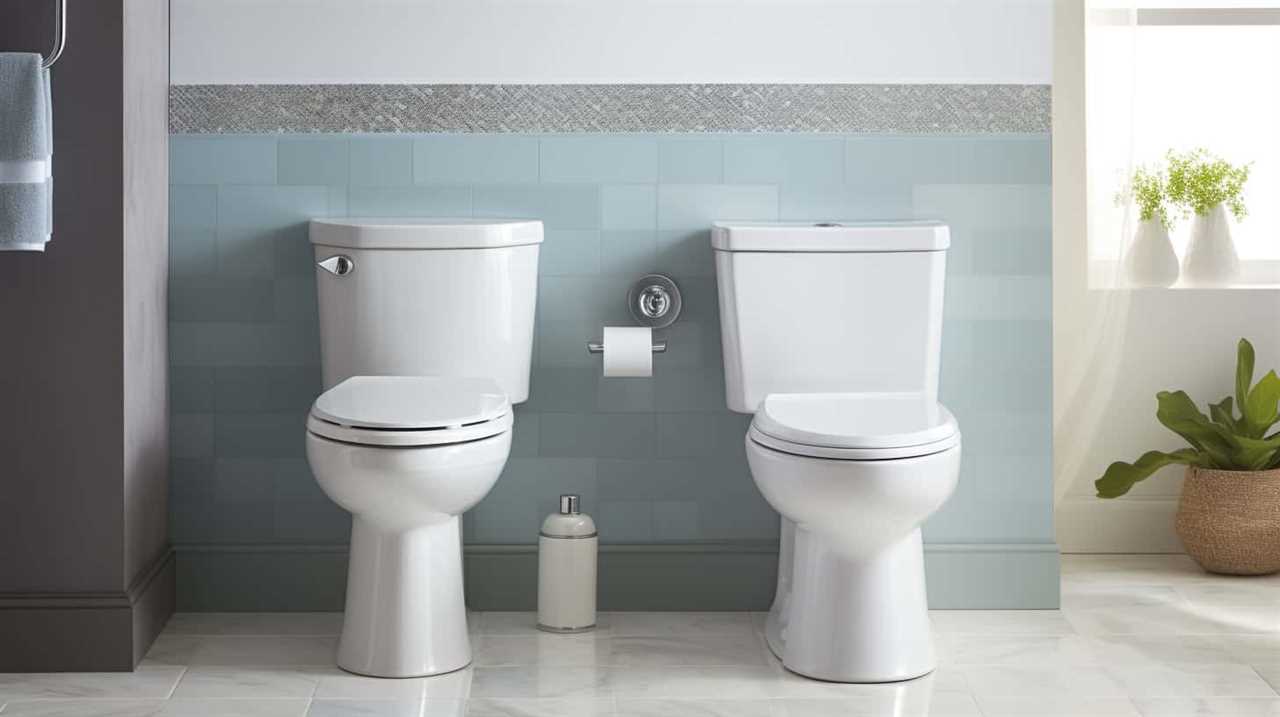
One of the most noticeable impacts of low water pressure is a decrease in the efficiency of water-based appliances and fixtures. Showers may lack sufficient force, making it difficult to rinse off soap and shampoo. Faucets may have reduced flow, making it time-consuming to fill a pot or wash dishes. These inconveniences can be frustrating and time-consuming, highlighting the importance of water pressure maintenance.
To identify and address the causes of low water pressure, we’ll now delve into the common causes in the subsequent section.
Common Causes of Low Water Pressure
Low water pressure can be caused by a variety of factors. When troubleshooting water pressure issues, it’s important to understand the signs of low water pressure.
Some common causes of low water pressure include clogged pipes or fixtures, leaks in the water supply system, faulty pressure regulators, and inadequate supply from the main water line.

Clogged pipes or fixtures can restrict the flow of water and result in decreased pressure. Leaks in the water supply system can also reduce pressure as water is lost before it reaches the intended destination.
Faulty pressure regulators can fail to maintain the desired pressure, leading to low water pressure. Insufficient supply from the main water line can also result in inadequate pressure.
Identifying these common causes can help in resolving low water pressure issues efficiently.
How Low Water Pressure Affects Toilet Flushing
How does low water pressure affect our ability to flush a toilet?
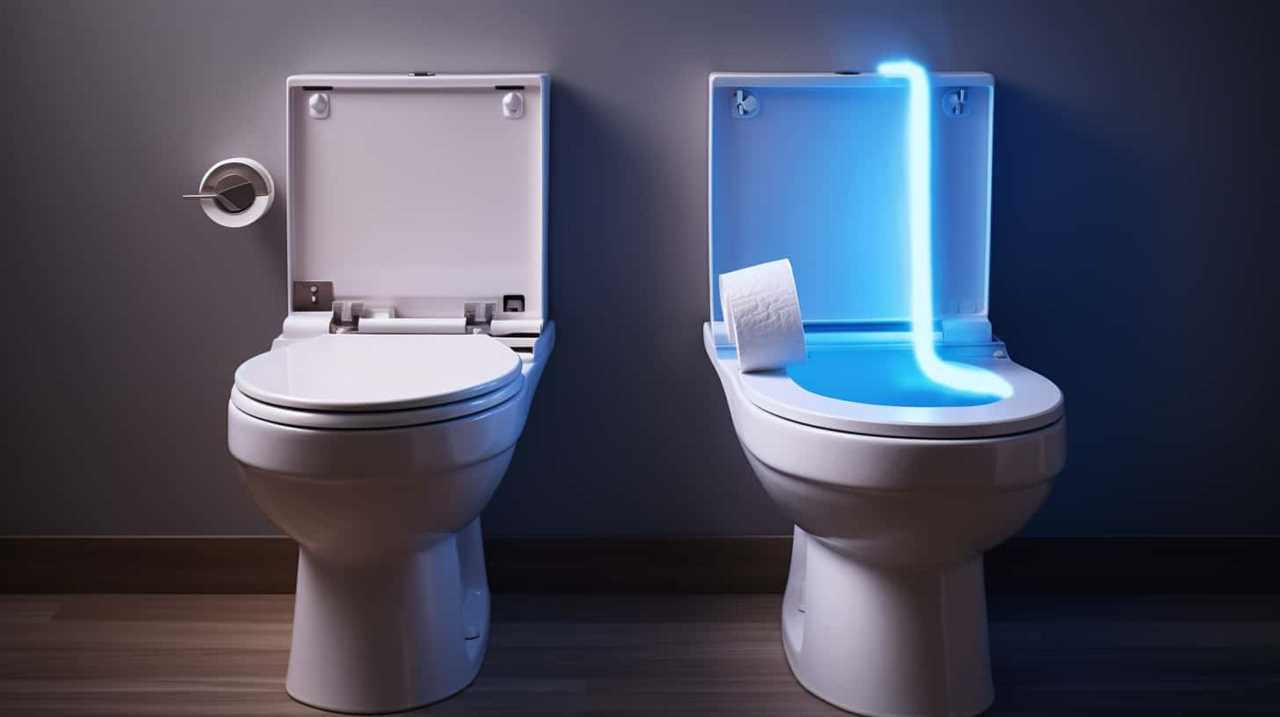
Low water pressure can significantly impact the flushing performance of a toilet. Here are two ways in which it can affect us emotionally:
- Frustration: When the water pressure is low, flushing becomes a tedious and time-consuming task. It can lead to frustration, especially when multiple attempts are required to clear the bowl.
- Embarrassment: Inadequate water pressure may result in incomplete flushing, leaving behind unpleasant odors and visible waste. This can cause embarrassment, particularly when using a shared or public restroom.
Understanding the importance of maintaining proper water pressure is crucial. By troubleshooting low water pressure issues, we can ensure efficient toilet flushing. In the next section, we’ll explore tips and techniques for flushing with low water pressure, which can help alleviate these emotional challenges.
Tips and Techniques for Flushing With Low Water Pressure
One effective technique for flushing with low water pressure is to adjust the fill valve to increase water flow. By adjusting the fill valve, you can allow more water into the tank, which in turn increases the force and speed of the flush.
Another option is to consider alternative flushing methods such as dual-flush toilets or pressure-assisted toilets. These types of toilets are designed to use less water while still maintaining a powerful flush.
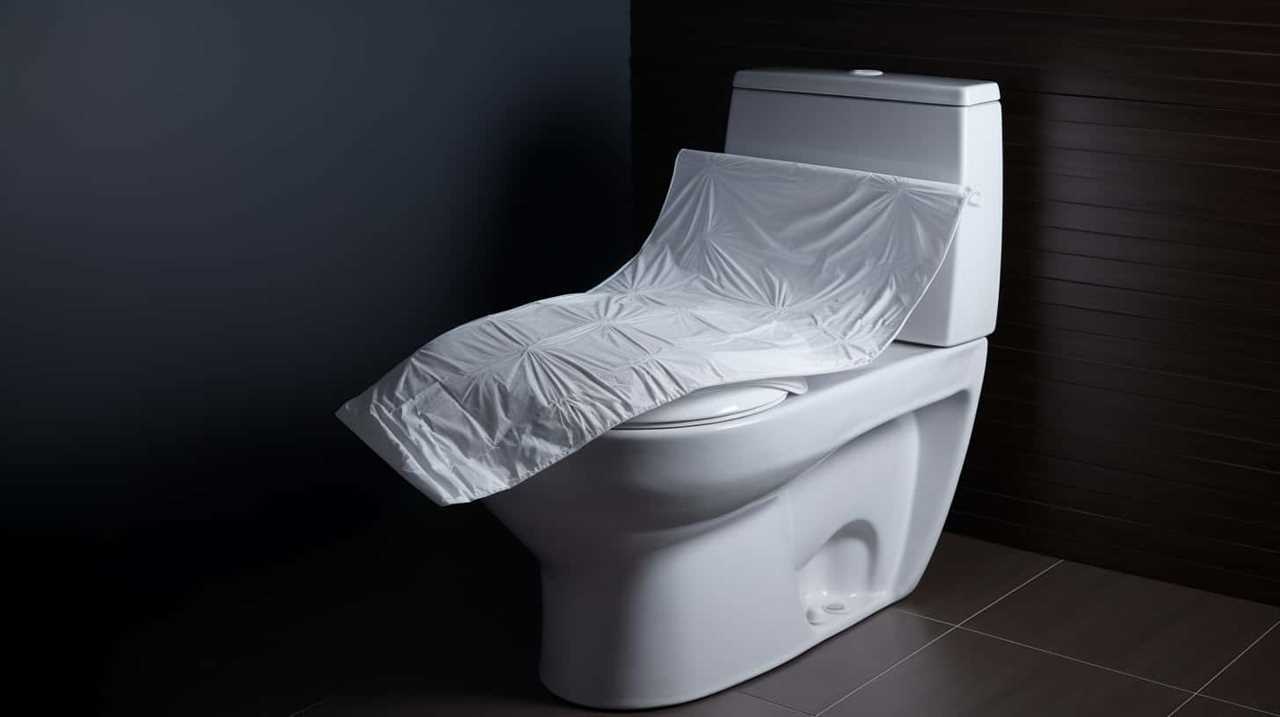
Additionally, you may want to explore water-saving toilet options, which are specifically designed to operate efficiently with low water pressure. These toilets utilize innovative flushing mechanisms that maximize the use of water, ensuring a thorough flush even with reduced pressure.
Additional Solutions for Improving Water Pressure in Your Toilet
To boost the water pressure in your toilet, we recommend checking for any clogs or blockages in the pipes. Clearing these obstructions can significantly improve the flow of water and enhance your toilet’s flushing performance.
Additionally, you can try the following solutions to further enhance your toilet’s water pressure:
- Install a pressure-assisted toilet: These toilets utilize compressed air to create a powerful flush, even with low water pressure. They’re specifically designed to provide optimal flushing performance in low-pressure situations.
- Adjust the fill valve: The fill valve controls the water level in your toilet tank. By adjusting this valve, you can increase the amount of water entering the tank, resulting in improved water pressure during flushing.
Frequently Asked Questions
How Can I Determine if My Toilet’s Low Water Pressure Is Due to a Problem With the Plumbing System or the Toilet Itself?
To determine if low water pressure in a toilet is due to a plumbing system problem or the toilet itself, we can troubleshoot by checking the water supply line, valves, and the toilet’s internal components.
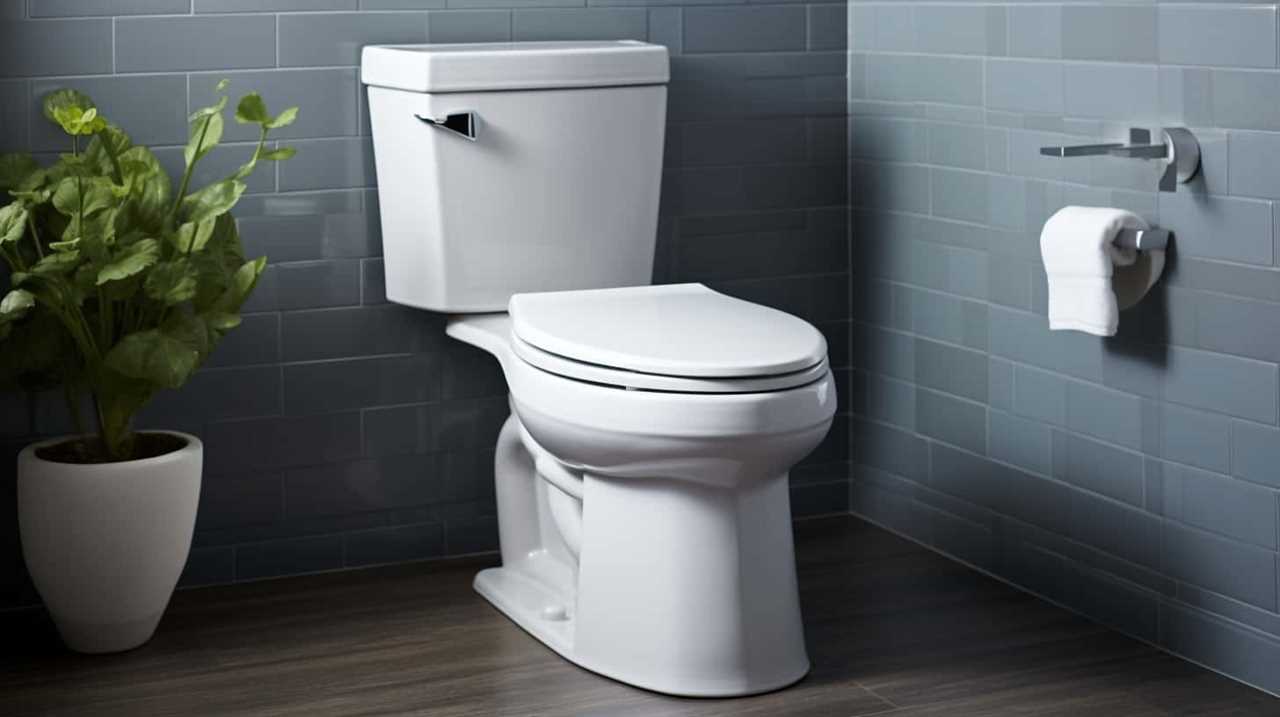
Can Using a Different Type of Toilet Help Improve Flushing Performance With Low Water Pressure?
Using an alternative toilet option can potentially improve flushing performance with low water pressure. However, it is important to consider the pros and cons of using a flush assist device before making a decision.
Are There Any DIY Methods to Temporarily Increase Water Pressure in a Toilet?
Yes, there are temporary solutions to increase water pressure in a toilet. One option is to install a pressure-assist system. Another option is to replace the toilet with a water-saving model.
What Are the Potential Risks of Using Excessive Force or Using Alternative Methods to Flush a Toilet With Low Water Pressure?
Using excessive force or alternative methods to flush a toilet with low water pressure can pose potential risks. It may damage the plumbing system, cause leaks, or lead to costly repairs. It’s important to address the underlying issue rather than resorting to forceful methods.
Are There Any Long-Term Solutions for Improving Water Pressure in a Toilet That Do Not Involve Costly Plumbing Repairs?
There are alternative solutions to improve water pressure in a toilet without costly plumbing repairs. One option is to install water-saving toilets, which can provide effective flushing even with low water pressure.

Conclusion
In conclusion, low water pressure can indeed pose challenges when it comes to flushing a toilet effectively. One interesting statistic to note is that toilets typically require a minimum water pressure of 10 psi to function properly. Therefore, it’s important to address any underlying causes of low water pressure in order to ensure efficient flushing.
Implementing the tips and techniques mentioned in this article, as well as exploring additional solutions, can help improve water pressure and maintain optimal toilet performance.



